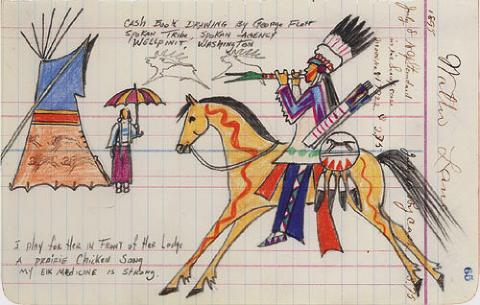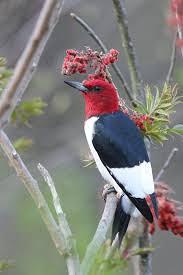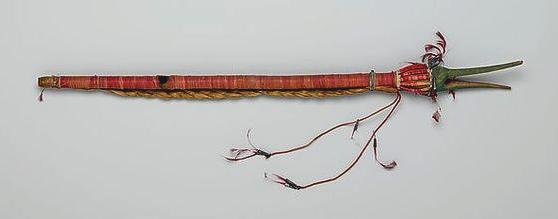 |
Canku Ota
|
 |
|
(Many Paths)
|
||
|
An Online Newsletter
Celebrating Native America
|
||
|
April 2016 - Volume
14 Number 4
|
||
|
|
||
|
The Legend Of The
Flute
|
||
|
|
||
|
Once, many generations ago, the people had drums, gourd rattles and bull-roarers, but no flutes. At that long-ago time, a young man went out to hunt. Meat was scarce, and the people in his camp were hungry.
He found the tracks of an Elk and followed them for a long time. The Elk, wise and swift, is the one who owns the love charm. If a man possesses Elk Medicine, the girl he likes can't help liking him, too. He will also be a lucky hunter. This young man I'm talking about had no Elk Medicine. After many hours, he finally sighted his game. He was skilled with bow and arrows and had a fine new bow and a quiver full of straight, well-feathered, flint-tipped arrows. Yet, the Elk always managed to stay just out of range, leading him on and on. The young man was so intent on following his prey he hardly noticed where he went. When night came, he found himself deep inside a thick forest. The tracks had disappeared and so had the Elk. There was no moon. He realized he was lost and, it was too dark to find his way out. Luckily, he came upon a stream with cool, clear water. He had been careful enough to bring a hide bag of wasna - dried meat pounded with berries and kidney fat, strong food that will keep a man going for a few days. After he drank and ate, he rolled himself into his fur robe, propped his back against a tree and tried to rest. But he couldn't sleep; the forest was full of strange noises, and the cries of night animals ... the hooting owls, the groaning trees in the wind. It was as if he heard these sounds for the first time. Suddenly, there was a entirely new sound, a kind neither he nor anyone else had ever heard before. It was mournful and ghost-like. It made him afraid, so he drew his robe tightly about himself and reached for his bow to make sure it was properly strung.
When the hunter awoke, the sun was already high. On a branch of the tree against which he was leaning, he saw a redheaded woodpecker. The bird flew away to another tree, and another, but never very far, looking back all the time at the young man as if to say, "Come on!" Then once more, he heard that wonderful song, and his heart yearned to find the singer. Flying toward the sound, leading the hunter, the bird flitted through the leaves, while its bright red top made it easy to follow. At last, it lighted on a cedar tree and began hammering on a branch, making a noise like the fast beating of a small drum. Suddenly, there was a gust of wind, and again the hunter heard that beautiful sound right above him. Then, he discovered the song came from the dead branch on which the woodpecker was tapping his beak. He realized it was also the wind which made the sound as it whistled through the hole the bird had drilled. "Kola, friend," said the hunter, "let me take this branch home. You can make yourself another." He took the branch, a hollow piece of wood full of woodpecker holes that was about the length of his forearm. He walked back to his village bringing no meat, but happy all the same. In his tipi, the young man tried to make the branch sing for him. He blew on it, he waved it around, no sound came. It made him sad. He wanted so much to hear that wonderful new sound. He purified himself in the sweat lodge and climbed to the top of a lonely hill. There, resting with his back against a large rock, he fasted, going without food or water for four days and nights, crying for a vision which would tell him how to make the branch sing.
When he awoke, he found a cedar tree. He broke off a branch and, working many hours, hollowed it out with a bowstring drill, just as he had seen the woodpecker do in his dream. He whittled the branch into the shape of the birds with a long neck and a open beak. He painted the top of the birds head with washasha, the sacred red color. He prayed. He smoked the branch up with incense of burning sage, cedar and sweet grass. He fingered the holes as he had seen the man-bird do in his vision, meanwhile blowing softly into the mouthpiece. All at once, there was the song, ghost-like and beautiful beyond words ... drifting all the way to the village, where the people were astounded and joyful to hear it. With the help of the wind and the woodpecker, the young man had brought them the first flute.
A short time later an Elk Man would bring the Elk Flute songs also from a great vision! |
||
|
|
||
|
|
||
| Canku Ota is a free Newsletter celebrating Native America, its traditions and accomplishments . We do not provide subscriber or visitor names to anyone. Some articles presented in Canku Ota may contain copyright material. We have received appropriate permissions for republishing any articles. Material appearing here is distributed without profit or monetary gain to those who have expressed an interest. This is in accordance with Title 17 U.S.C. Section 107. | ||
|
Canku Ota is a copyright ©
2000 - 2016 of Vicki Williams Barry and Paul Barry.
|
||
 |
 |
|
|
The "Canku
Ota - A Newsletter Celebrating Native America" web site and
its design is the
|
||
|
Copyright ©
1999 - 2016 of Paul C. Barry.
|
||
|
All Rights Reserved.
|
||

 For
as frightening as it was, the sound was also like a song, sad but
beautiful, full of love, hope and yearning. Then, before he knew
it, he was asleep. He dreamed the bird called wagnuka, the redheaded
woodpecker, appeared singing the strangely beautiful song and telling
him, "Follow me and I will teach you."
For
as frightening as it was, the sound was also like a song, sad but
beautiful, full of love, hope and yearning. Then, before he knew
it, he was asleep. He dreamed the bird called wagnuka, the redheaded
woodpecker, appeared singing the strangely beautiful song and telling
him, "Follow me and I will teach you." In
the middle of the fourth night, wagnuka, the bird with the bright
red top, appeared, saying, "Watch me," turning himself
into a man, showing the hunter how to make the branch sing, saying
again and again, "Watch this, now." And, in his dream,
the young man watched and observed very carefully.
In
the middle of the fourth night, wagnuka, the bird with the bright
red top, appeared, saying, "Watch me," turning himself
into a man, showing the hunter how to make the branch sing, saying
again and again, "Watch this, now." And, in his dream,
the young man watched and observed very carefully.